Creative Bonds
South African Artists and the International Avant-Garde
12/07/2024 General News, Timed-Online Auctions
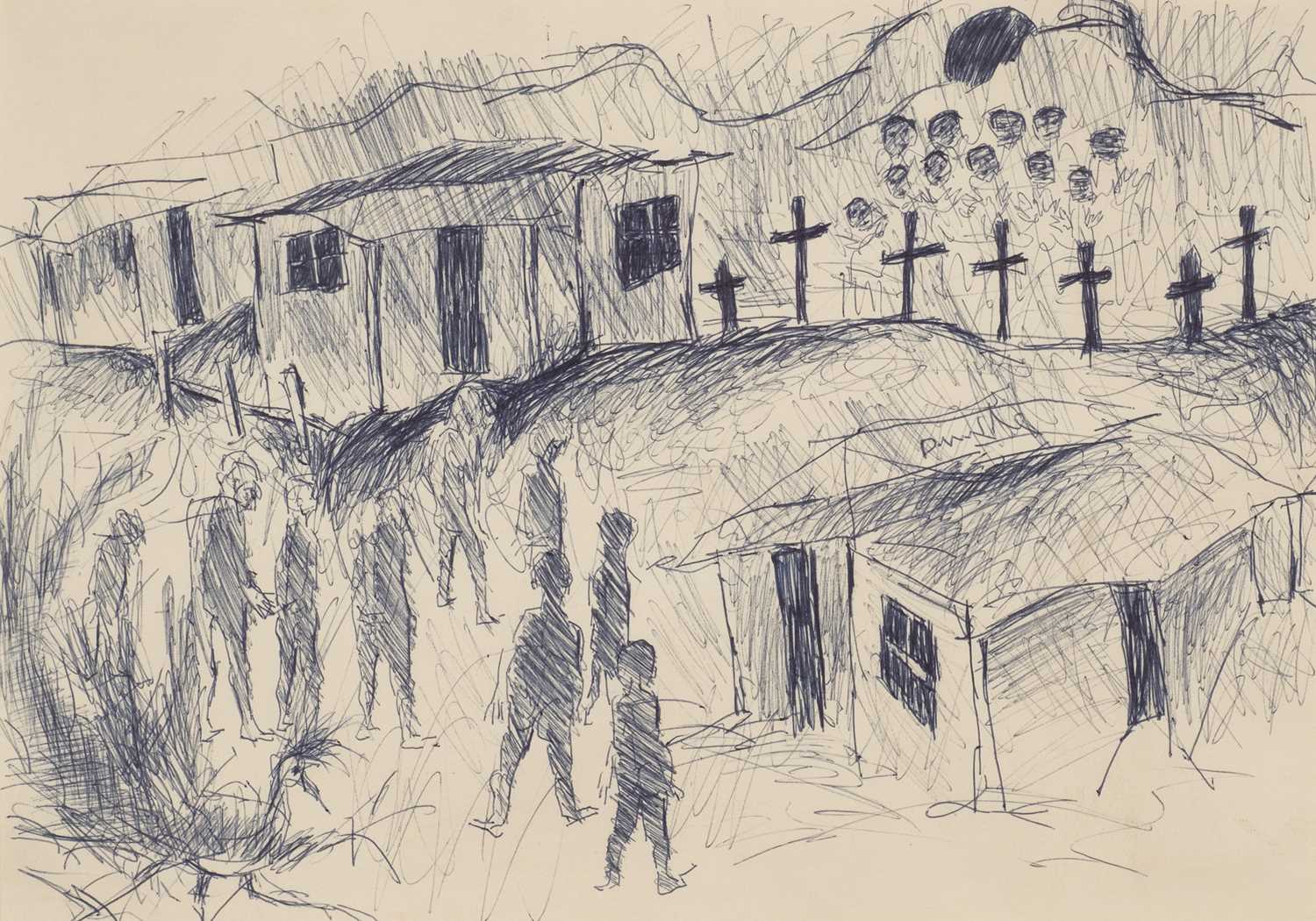
Lot 18: Dumile Feni, Untitled (Graveyard scene) | Estimate: R 10 000 - 15 000
The creative relationships between South African artists and their European and American counterparts are longstanding, with artists such as Walter Battiss meeting Picasso and futurist Gino Severini in Italy in 1949 to Norman Catherine spending the early 1980’s in New York and Los Angeles, Dumile Feni residing in London and then America in self-imposed exile, Robert Hodgins immigrating to South Africa from the United Kingdom in 1938, Christo Coetzee forming an integral part of the Gutai Group and Japan and progressive art movements in Europe and being the first South African artist to have exhibited at Museum of Modern Art (MoMA) in New York, and Dr Esther Mahlangu travelling to France in 1989 to paint murals for the famed exhibition of international contemporary art titled the Magiciens de la Terre at Centre Georges Pompidou.
The current Works on Paper Timed-Online presents a collection of works on paper by these beloved South African masters alongside significant works by their international peers.
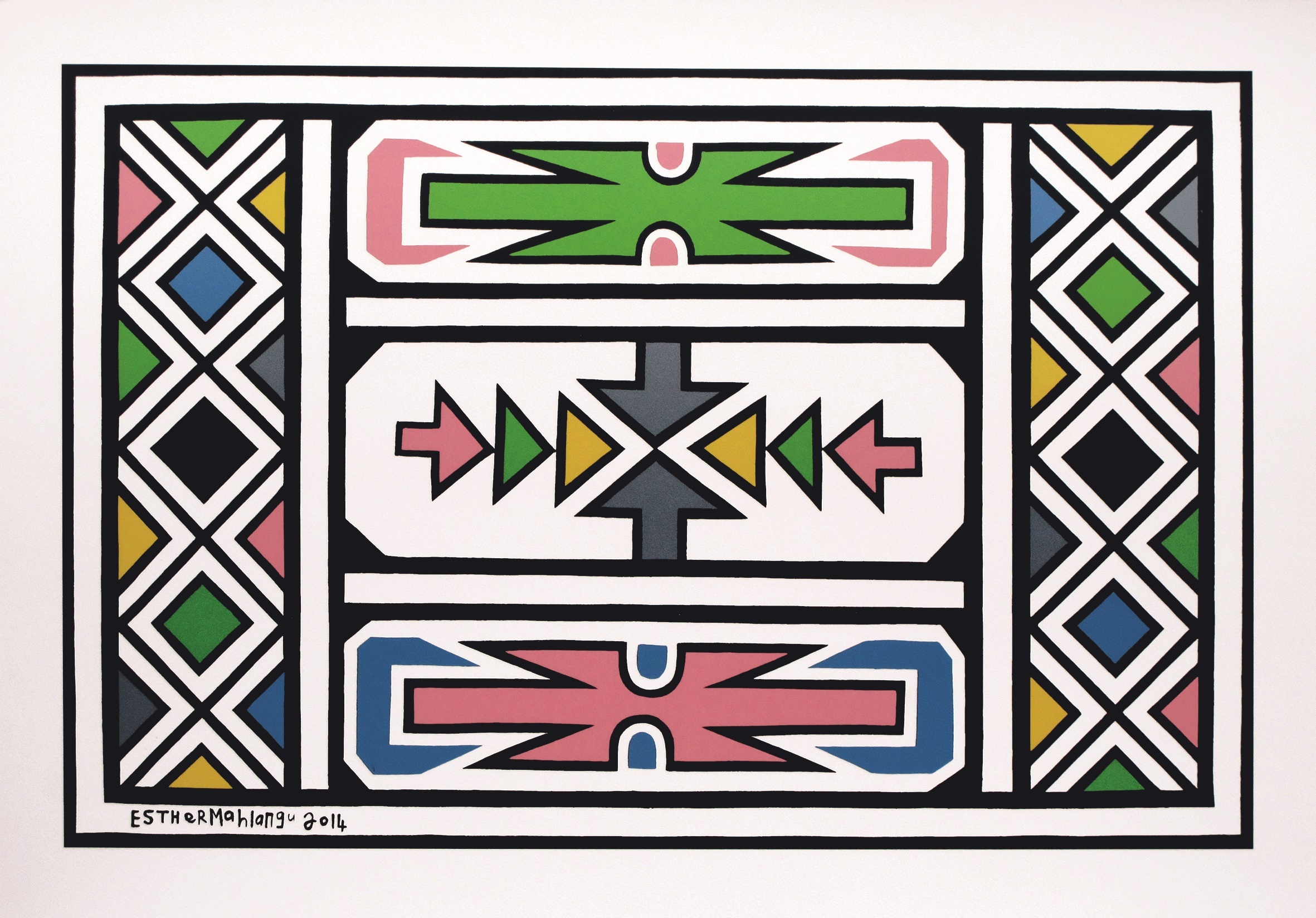
Lot 7: Esther Mahlangu, Abstract |, 2014/2015. Estimate: R 18 000 - 20 000
Victor Vasarely

The artist photographed by Willy Ronis. Image Courtesy: Fondation Vasarely
Born Győző Vásárhelyi in Hungary on April 9, 1906, Vasarely would go on to study painting at the Muhely Academy, after a brief period of pursuing studies in medicine. He developed a distinct style which incorporates geometric shapes and colourful graphics, the artist manufactures compelling illusions of spatial depth. The artist has been dubbed the grandfather and leader of the Op Art movement—short for optical art—which was established in the 1960s and was grounded in the use of geometric forms to create optical effects, drawing on colour theory as well as the psychology and physiology of perception.
His work features in some notable collections including the Tate Gallery in London, the Peggy Guggenheim Collection in Venice, the Art Institute of Chicago and Albright-Knox Art Gallery in Buffalo.

Lot 62: Victor Vasarely, Réponses a Vasarely (Responses to Vasarely) | Estimate: R 50 000 - 70 000
Antoni Tàpies
Much like Vasarely, Catalan artist Antoni Tàpies would abandon his previous studies – in this case a law-degree – to devote himself to a career in art. He helped found the Dau al Set Surrealist organization in 1948 in Barcelona, along with notable artists such as Paul Klee and Joan Miró. His artistic practice shifted in 1950 from Surrealism to abstraction, eventually creating thick, impasto ‘matter’ paintings securing his global reputation. Tàpies’ lithographs were noted for their unique, cryptic and spontaneous effects.
In 1990, Tàpies received the Japan Art Association’s Praemium Imperiale prize for painting, and in 2010 was elevated to the Spanish nobility, with the title marqués de Tàpies.
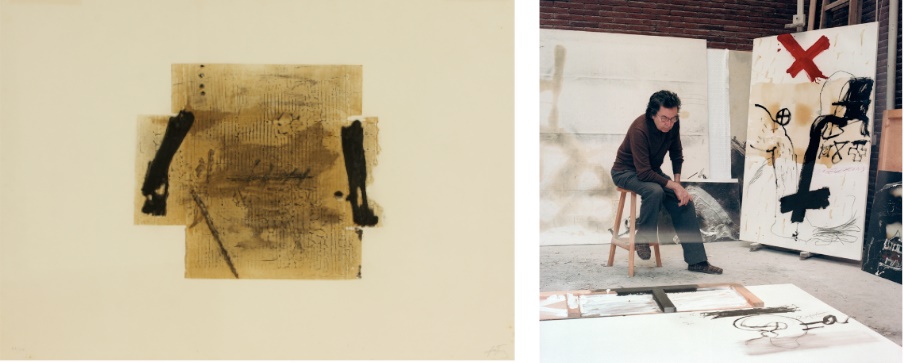
LEFT: Lot 62: Antoni Tàpies, Duex Noirs et Carton | Estimate: R 7 000 - 10 000
RIGHT: The artist in his studio. Photographed by Francesc Català-Roca. Image Courtesy: Arquitectura Catalana
Joan Miró
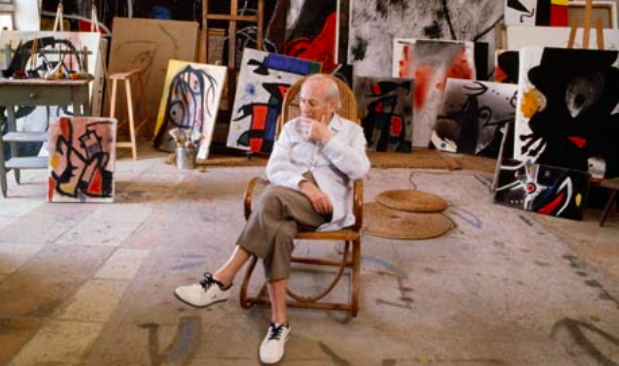
Joan Miró at home in his studio in Palma de Mallorca, c1977. Photograph: Christian Simonpietri/ Sygma/ Corbis.
Image Courtesy: The Guardian
Joan Miró Ferra was born in Barcelona in 1893. At the young age of 14, Miró attended both business and art school, but abandoned business shortly after to resume his academic training and studies in art. It did not take long for his talent to be noticed, with his first solo exhibition taking place in Barcelona in 1918. In the early 1920s the artist travelled between Spain and France, meeting prominent artists and poets such as Picasso and Tristan Tzara. From 1929, Miró started experimenting in lithography and etching.
A prolific artist, his first major museum retrospective was held at the MoMA in New York in 1941. Other retrospectives took place at the Musée National d’Art Moderne, Paris in 1962 and the Grand Palais, Paris (1974). Miró was awarded the Grand Prize for Graphic Work at the Venice Biennale in 1954, and given a Guggenheim International Award for murals for the UNESCO building in Paris in 1958. The following year he resumed painting, initiating a series of mural-sized canvases and drawings.
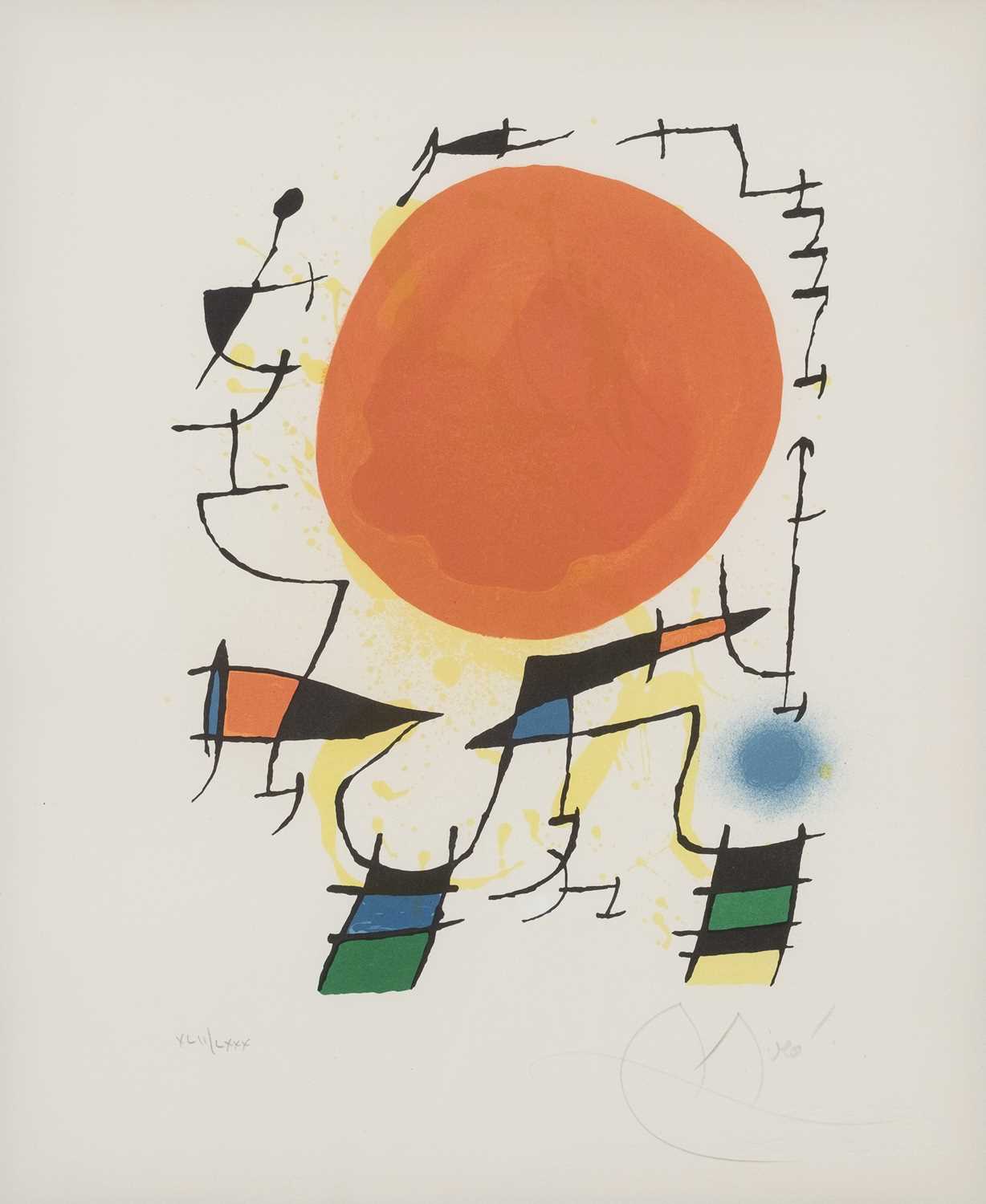
Lot 65: Joan Miró, Le Soleil Rouge (The Red Sun) | Estimate: R 30 000 - 40 000
Gerhard Richter
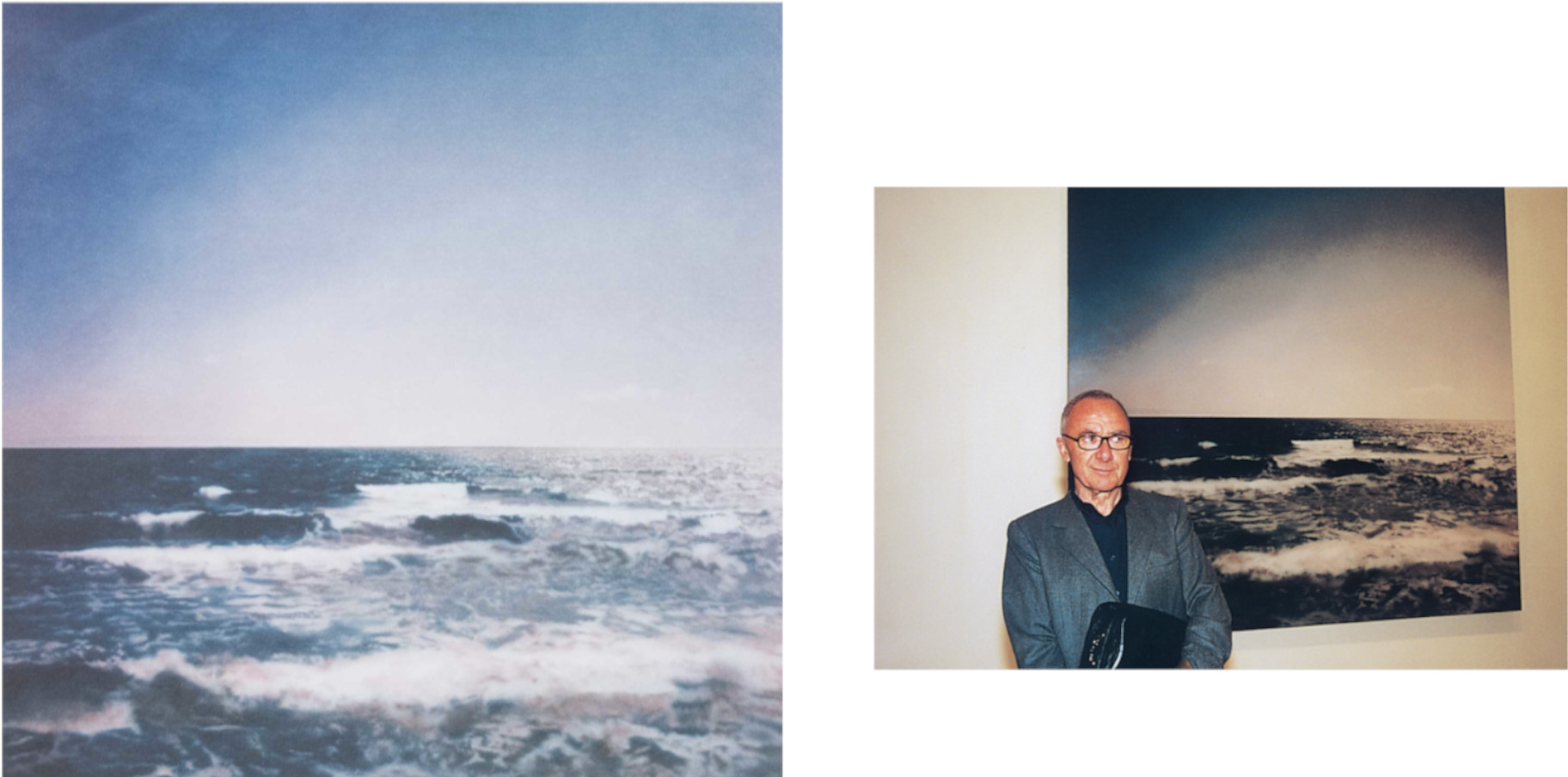
LEFT: Lot 81: Gerhard Richter, Seestück, 1998 | Estimate: R 8 000 - 12 000
RIGHT: The artist posing in front of Seestück (1968), oil on canvas. Image Courtesy: Guggenheim Bilbao
German artist Gerard Richter, born in Dresden in 1932, spent his career negotiating the boundaries between art-photography and painting. Moving seamlessly between the two mediums he focused on the push and pull of two seemingly opposing artistic practices. Being at first trained in the Socialist Realist style which was politically encouraged by the East Germany Communist government, the artist’s practice would change drastically with the German socio-political circumstances in the wake of World War II. Richter started experimenting with art beyond ideological restraints and continued to be motivated by socio-political affairs and popular culture.
The artist received the Junger Western Art Prize in 1967, expanding his series of Farbtafeln (Colour Charts) (1966–2008) and Graue Bilder (Gray Paintings) (1966–2014). Richter was chosen to represent West Germany at the Venice Biennale in 1972, the same year exhibiting at Documenta in Kassel, where he showed again in 1977, 1982, and 1987.
Henry Moore
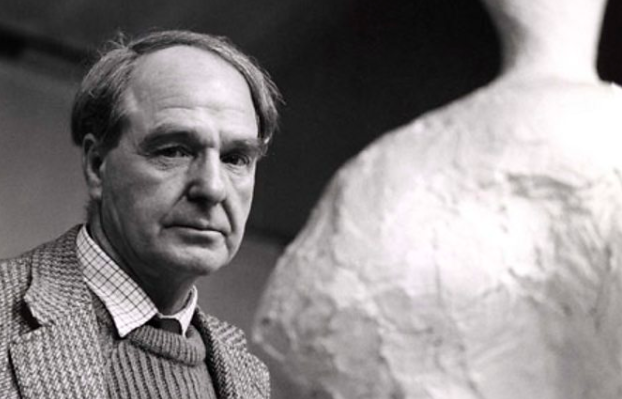
Photograph of the artist.
Image Courtesy: BBC Archive
English artist, Henry Moore, was a pioneer in modern sculpture, inspired by natural forms and the human body, becoming a celebrated artist internationally within his lifetime. Although he had known from a young age that he wanted to be a sculptor, Moore first trained to be a teacher, and then joined the army. In 1919, Moore realised his ambition to become an artist and enroledl at the Leeds School of Art and then the Royal College of Art in London.
By the 1930s, Henry Moore was among the leading avant-garde sculptors in Europe. The artist believed in the civic responsibility of the artist, and by the late 1940s and 1950s, he had created a remarkable collection of public works, situated in schools, hospitals, and housing estates. In 1946, a major retrospective exhibition of his work was represented at the MoMA in New York and in 1948, the artist won the International Prize for Sculpture at the Venice Biennale. His global popularity was further strengthened by major exhibitions at the Tate in London in 1968 and the Forte di Belvedere in Florence in 1972.
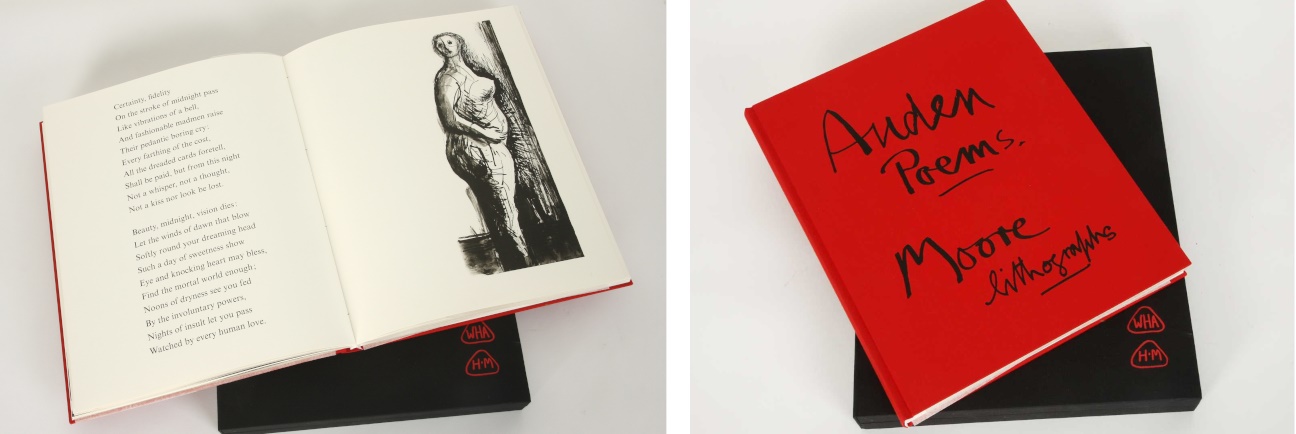
RIGHT: Lot 63: Henry Moore, Auden Poems, Moore Lithographs | Estimate: R 20 000 - 30 000
Discover more works on paper by leading local and international superstars here.
Auction
Works on Paper
4 - 16 July 2024
Discover more from Works on Paper
SALE ENQUIRIES
Cape Town: +27 21 422 5100 | amy@aspireart.net
Johannesburg: +27 10 109 7989 | carina@aspireart.net